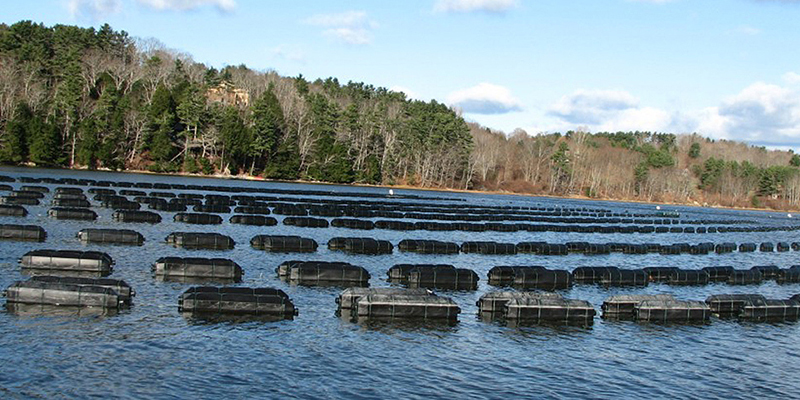As concerns about covid-19 have failed to dissipate over the summer, many events celebrating Eastern oysters have been canceled, such as the annual Milford Oyster Festival in Connecticut. The festival, scheduled for mid-August, typically draws more than 50,000 attendees each year, as well as significant tourist spending, featuring musicians like Blue Öyster Cult, Joan Jett and Jefferson Starship.
But it’s on hold now until 2021, and organizers are encouraging oyster lovers to seek out the popular saltwater bivalve mollusks from local establishments, to help support the industry.
“As I talk to various producers and dealers from up and down the coast and into the gulf, I hear some hatcheries [are] really hurting, and some telling me that their sales are recovering after a flurry of purchase cancellations,” says Bob Rheault, executive director of the East Coast Shellfish Growers Association. “Growers in some areas claim to be seeing solid sales — while the vast majority are seeing some rebound in sales, but few are where we need to be to avoid significant challenges later in the year in terms of balancing supply and demand.”
Because consumers are not always comfortable cooking or shucking oysters at home, restaurant markets are critical to the oyster industry. “The number of guests that we are able to accommodate has gone down a lot, but it is clear that all customers still want oysters,” says Arlin Smith, owner and general manager of the popular Eventide Oyster Co. in Portland, Maine. Eventide offers farm raised oysters from Maine, and sometimes Massachusetts and Canada, by the dozen ($29) and half-dozen ($16). Smith says the cost of buying oysters this year has come down slightly.
There was some indication that, the pandemic led some aquaculture producers to leave their oysters to grow for longer than they typically would have. But overall, aquaculture producers were prepared for the reopening of restaurants.
“We did not hear of any big issues with farmers worried about sitting on product,” adds Smith. And there are upshots. “We have noticed a big change in the quality of oysters, across the board. Many farms that would normally come into us kind of shoddy (weak shells, dirty, dead, translucent meat) are showing great improvement in quality. That is good for everyone who is a part of this chain” from growers to consumers, he says.
“We don't have much hard data — but anecdotally, things are not great,” says Rheault. “Curiously, the impacts appear highly regional and localized.”
Rheault says several growers and dealers are reporting that lower-priced products — bottom cultured oysters, for instance — “are moving much better than the top-quality, high-priced select raw bar oysters as restaurants try to cut their input costs in the face of reduced capacity seating. The strange part about this industry is while sales initially dropped by 90 percent on March 13, and still remain depressed — this is mostly a cash flow challenge, for now. We still have lots of inventory. If sales were to recover tomorrow, we would be fine. Unfortunately, that is unlikely.”
While Rheault says some growers have pivoted to to-go, delivery, online sales, farmers’ markets and direct-to-consumer sales, “this is a fraction of what we need to sell, and it represents a huge effort.” On the Oyster Commons, a digital marketplace that links consumers and restaurant operators to growers, Maris Stella on Captree Island, N.Y., was offering large (3.5-4 inches, meaty) Blue Points from $0.80 each plus shipping and medium (3-3.5 inches) Blue Points from $0.75 each plus shipping in July.
Maine Department of Marine Resources data shows that the harvest of cultivated American oysters (Crassostrea virginica) in the state had more than tripled from 2013-19, from 4.58 million pieces in 2013 (valued at $3.11 million), up to 13.89 million pieces (valued at $9.67 million) in 2019. In the productive Chesapeake Bay, the wild-oyster population has been replaced by aquaculture operations that have been fueling demand. Overall, East Coast farmed oyster production had doubled from 2014-19, along with prices that have trended up steadily and slowly for several years.
While the long-term consequences of covid-19 on future crops and major markets are still unclear, everyone — from farmers, to restaurant owners, to consumers — is hoping for the best.
“My concern is what might happen in the fall when we see a traditional glut of supply and a weakening of demand,” says Rheault. “Both are likely to be much worse this year, and I am trying to get some product off the market to mitigate the downward price pressure. We are petitioning the USDA to buy some shellfish for food banks and trying to find funds to put some larger product on reefs to avoid a collapse in prices.”







